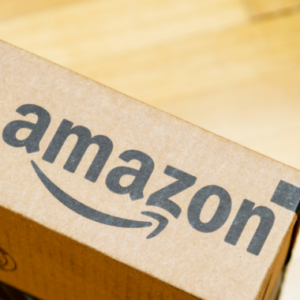
E-commerce continues to experience intrinsic transformation.
Following a period of extraordinary acceleration in the industry, financial firms have begun taking particular interest in the success of Amazon, particularly in the potential of its sellers and brands. As capital flows into the increased activity of acquiring Amazon sellers and brands, therefore capturing the opportunities inherent within them, the landscape is changing once again.
In 2020, nearly $1 billion in investments were poured into Amazon sellers and brands, with commerce investment groups primarily located in the US, Germany and the UK purchasing and fusing smaller Amazon sellers together into a larger Amazon brand.
“We’re seeing a very large increase in companies that acquire and aggregate Amazon brands to help them grow and expand into other channels,” Nathan Bird, US sales leader at ChannelAdvisor, said. “This causes major challenges, as the company navigates multiple brand lines, inventory lines, delivery methods, reporting, integrations and the need to develop a process at scale. We find we’re at the table with CMOs, CTOs, CIOs and e-commerce managers who are all trying to unify their teams to one common goal. They need a system that can drive operational efficiencies, reduce risks and focus together on growing revenues. We’re happy to provide an omnichannel solution to meet their needs.”
We’re taking a closer look at the complexities and the significant gateways to increased profit and growth involved in merging multiple sellers into one brand and a larger unit.
Out of Many, One
E pluribus unum. A familiar motto on US coins (translated as “out of many, one”), this phrase could describe current efforts to combine and streamline several different perspectives, company sizes and goals into one e-commerce engine.
Some Amazon sellers are built from the ambition of one individual and have maintained a highly individualized, highly driven approach to running their business. Others have experienced rapid growth due to a combination of factors of timing, popular product and relevant opportunity.
When bringing these different models together under the same corporate roof, one of the primary challenges is maintaining control of multiple brands coming from different backgrounds and growth levels.
Managing a variety of brands across Seller Central and Vendor Central is an ever-present issue that involves making appropriate decisions based on data. The first step involves analyzing the connections that must be maintained across systems and processes. As companies try to balance technical aspects of direct-to-customer orders, alongside dropship orders from various avenues, it puts heavy demand on technical resources to maintain work flows and ensure bridges are seamless to enterprise resource planning systems and warehouse operations.
Communication & Reporting
A key point of communication involves accurate and reliable reporting on performance of all brands operating under one corporate umbrella, with many of them selling across multiple channels. In this area, visibility into high return-on-investment (ROI) brands becomes key as they scale. Filtering, sorting brands on a comparative basis according to quarterly performance can aid in portraying a clear presentation to investors what their return is and what could make the company more attractive when growing their portfolios.
Managing data to create accurate reporting for investment purposes presents a significant challenge. Any technology and instrumentation that helps collect data across multiple time frames in the following areas at minimum will help ease the work burden and ultimately support profitable growth:
- Content
- Orders
- Costs
- Sales
- Advertising campaign dates
Operational Efficiencies
The complexities of managing multiple brands involve multiple selling channels, varying levels of return on ad spend (ROAS) and multitiered operational efficiencies.
Content
Brands often operate across multiple categories and subcategories, each with its own set of unique content challenges. Required, recommended and suggested product information attributes help ease the transaction with the customer and provide details for limited customer support. It’s critical to have a product information management system as a source of truth that can easily manage, manipulate and deploy product information across retail destinations, easily troubleshoot issues and support channel search engine optimization best practices.
Advertising
Understanding the history of advertising activities under each separate brand can create a deeper awareness of the perspective of each of those brands. Beyond that, analyzing performance and balancing the varying priorities and situations of each entity can be difficult.
A key element to remember is the fact that although advertising budget may come from one source, it must be applied across several channels, for various product lines, each with different impression, revenue or ROAS goals. To achieve strong results with the most efficient approach, those differences must be taken into account. Additionally, transparency around campaign performance and the impact of budget allocation on each brand will provide deeper insights into potential future actions.
Inventory & Fulfillment
Each acquired brand comes with its own logistics process involving either a standalone warehouse management system (WMS) or a partnership with a third-party logistics (3PL) company. Additionally, each brand has different quantities of products and product lines. Integration is essential to long-term performance, so finding a solution that can easily integrate work flows and systems, where possible, will prevent downtime or delays.
Future Growth
Although the overall entity consists of multiple brands, it’s critical to continue to view each brand as a different market opportunity with capability of reaching new destinations and profitability. To focus on these individual areas of opportunity, a system should be implemented to provide as much channel support as possible, depending on the product categories involved.
Ultimately, any system that monitors and manages the needs of multiple brands across multiple channels in a way that improves their individual performances, strikes an intricate balance among their varying needs and clearly communicates to investors and consumers alike must be agile. Agility is the key to onboarding newly acquired brands and to assisting brands navigating the frequently changing environment of online selling.
Trust the Leader in E-Commerce
As the industry’s most trusted centralized e-commerce platform, ChannelAdvisor offers an award winning, robust platform that helps companies monitor, manage and improve activity across brands operating in an intricate multichannel environment. We’re undaunted by complexity.
Our Services Team works in the specialized marketplace and advertising domains all day every day. All of our solutions are based on years of experience helping e-commerce sellers optimize their performance, and we offer the ability to customize aspects of our platform to meet your specific needs. Interested in learning more? Let us show you what we can do. Contact us for a demo today.






